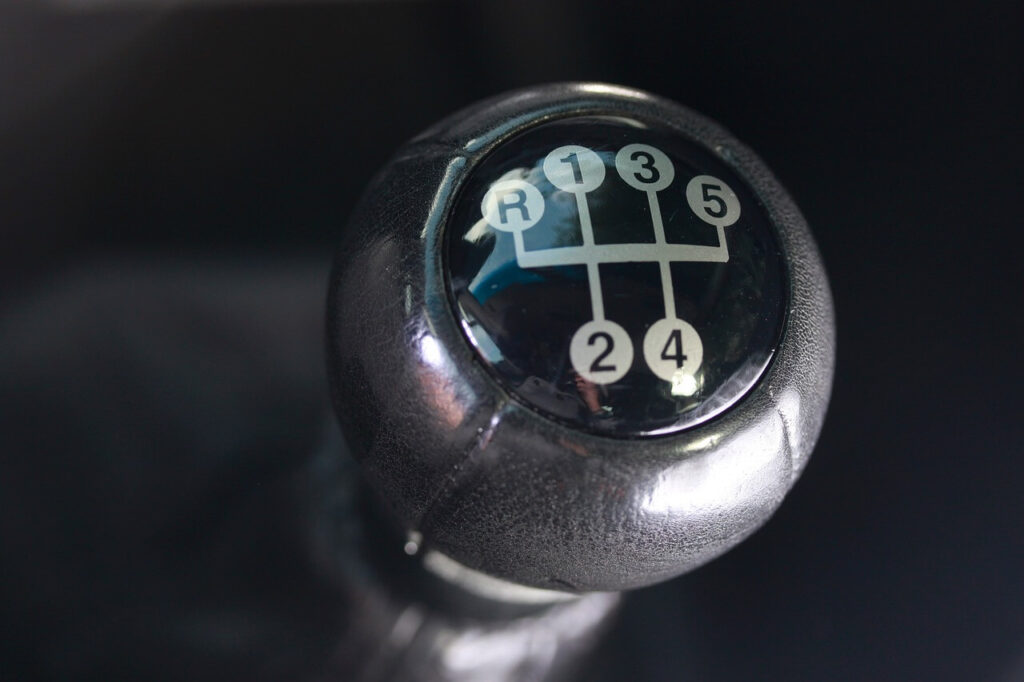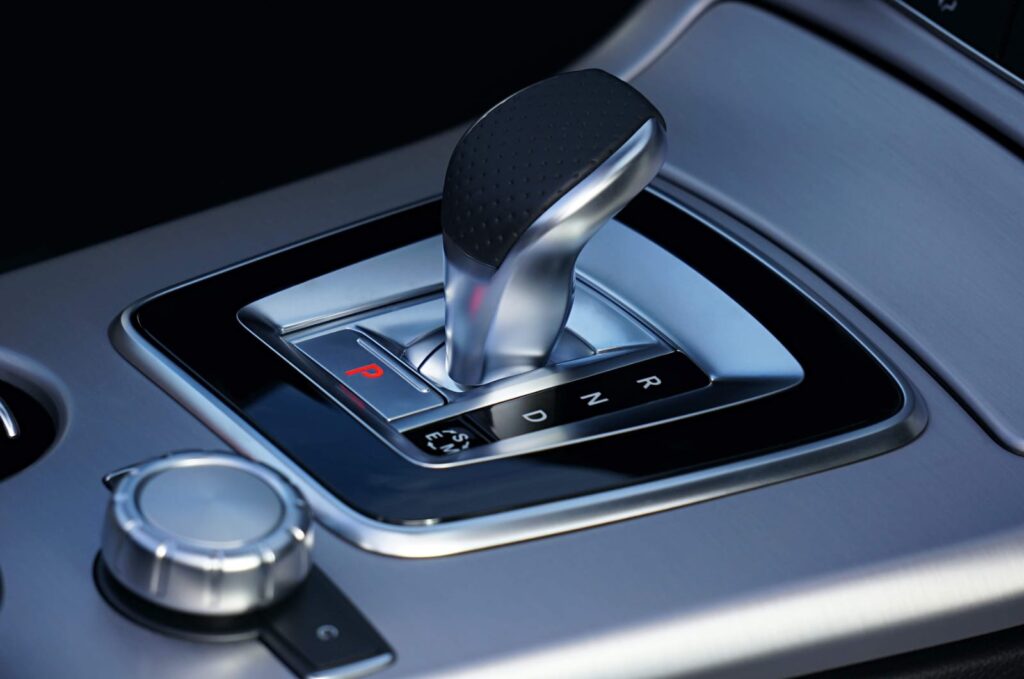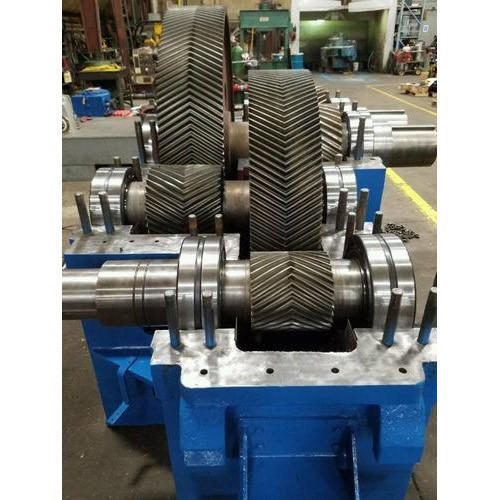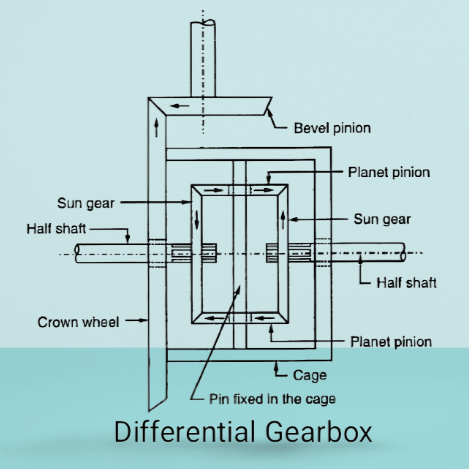Table of Contents
WHAT IS GEARBOX
A gearbox is a mechanical device contains several different sizes of gears that transmits power from Engine or motor to a device, such as a wheel, a shaft, or an axel. The gearbox uses gears and gear trains to increase or decrease the speed and torque of the input speed, according to the required output. it transfer energy through different gears like bevel gear, spiral bevel gear or other planetary gear that are mounted on shaft.
FUNCTION OF TRANSMISSION
- Transmission helps vehicle to control speed converted from roadwheels. It helps to prevent the direct connection between wheel and engine.
- Transmission has a neutral position where Engine and wheel disconnected even clutch is in engaged position.
- It helps to drive the vehicle in the reverse direction.
- It provides leverage between Engine and steering wheel.
- It helps to drive vehicle at different speeds.
TYPES OF TRANSMISSION SYSTEM
MANUAL TRANSMISSION

- It’s mainly used gearbox in transmission.
- In direct driving efficiency is 98%, while changing gear reduces it’s efficiency to 90%.
- In manual transmission with direct driving frictional losses are very small.
- It has simple mechanism and lower initial cost so it’s still very much popular.
AUTOMATIC TRANSMISSION

- This transmission can change gears automatically without the need for manual input from the driver.
- It uses a Combination of gears, hydraulic pumps, and actuators to find out optimum gear ratio for the vehicle’s speed and load, and then automatically selects and engages the suitable gear.
- The main advantage of an automatic transmission is that it provides smoother and more convenient shifting of gears compared to a manual transmission, allowing the driver to focus on driving without the need to manually shift gears.
- It also improved fuel efficiency. This commonly found in luxury cars, light trucks, and SUVs.
GEARBOX OF COMMERCIAL VEHICLES & ITS TROUBLESHOOTING
| SL NO. | TROUBLE | WHEN OCCURS | CAUSES |
| 1. | Grinding noise in Neutral | Engine is running but clutch is in neutral. | Misalignment with Engine causing shaft from flywheel to gear box. |
| 2. | Noise in gear | When engine is in running or rear wheel turning off the ground. | a) Dry rear bearing on main shaft. b) Damaged drive gears. |
| 3. | A hum or bowl in neutral | Engine is in running condition. | a) Lack of lubrication. b) Too much backlash. |
| 4. | Improper Shifting | During Gear changing | a) Improper shifting techniques can put undue stress on gears and cause damage to gearbox b) Wrong clutch adjustment. |
| 5. | Mechanical Failure | Gears and bearings failure | a) Manufacturing defects. b) improper installation. c) Age-related wear. |
| 6. | Sleeping of gears | During running. | a) Too much clearance between mating parts of gear teeth. b) damaged gear teeth. |
Alongside with above reasons, Gearbox problems in commercial vehicles can be caused by a variety of factors, including:
- Overloading: Excessive weight placed on the gearbox can cause damage and put extra stress on the gears and bearings.
- Wear and Tear: Normal wear and tear on the gears, bearings, and other components can cause the gearbox to fail over time.
- Contamination: Dirt, dust, and other contaminants can get into the gearbox and cause damage to the gears and bearings.
- Poor Lubrication: Insufficient or improper lubrication can cause damage to the gears and bearings and increase the risk of gearbox failure.
It is important to diagnose the cause of a gearbox problem and address it promptly to minimize the risk of further damage and extend the life of the gearbox.
YOU CAN ALSO GET IDEA DIFFERENTIAL GEAR BOX WORKING AND ITS TROUBLESHOOTING.
FAQ RELATED TO GEARBOX TRANSMISSION:-
1. How to check Transmission fluid?
There are mainly two ways to check the transmission fluid level in a vehicle:
A. Visual inspection with dipstick:
- Most vehicles have a dipstick to check the transmission fluid level. To check fluid level, first park vehicle on a level surface.
- Run the engine for a few minutes so that fluid expanded to suitable volume.
- Then take a dipstick and wipe it clean with a cloth.
- Insert it fully into fluid then remove it again and check the level on the dipstick.
- There is marking of “Full” and “Add” between which fluid level should be. If fluid level is low, then add some fluid through the dipstick tube.
B. Checking fluid level electronically:
Some vehicles have an electronic system pre-installed that regularly check transmission fluid level. As per data shows consult Manufacturers or professional technician.
Also Fluid level can be checked through the inspection hole for some vehicles.
2. How to Add or Change transmission fluid?
Adding or changing the transmission fluid in your vehicle can help to maintain its performance and prolong the life of the transmission. Here is a general outline of the process:
- Find the transmission fluid dipstick: Generally it’s located near the engine, otherwise check manufacturer’s manual to determine location.
- Identify the type of transmission fluid requires: Different vehicles require different types of transmission fluid, so it’s important to use the correct type for your vehicle.
- Arrange necessary tools and materials: To change the transmission fluid, following things required i.e pump, a drain pan, a funnel, and transmission fluid.
- Park your vehicle on a level surface and engage the parking brake to prevent the vehicle from rolling while working.
- Locate transmission fluid drain plug: it’s typically located on the bottom of the transmission pan.Place the drain pan under it and Remove the drain plug with help of a wrench. Let the old fluid drain into the pan fully & Reinstall the drain plug.
- Fill the transmission with new fluid: Using the transmission fluid pump and a funnel, slowly add the new fluid to the transmission to a Correct level.
- Start the engine: With the engine running, shift through all gears to help circulate the new fluid and check for any leaks.Re-check level of fluid and add of necessary.
3. What is a CVT Transmission?
- A CVT (Continuously Variable Transmission) is a type of automatic transmission that can flawlessly change it’s gear ratios, rather than the fixed gear ratios of traditional automatic or manual transmissions.
- In Old transmission system, a series of different sizes gears are meshed together to transmit power from the engine to the wheels, while driver selects the desired gear ratio based on their speed required and driving conditions.
- In a CVT, a belt or chain connects two pulleys of varying sizes, that changes the effective gear ratio continuously based on the engine speed and load.
- The main advantage of a CVT transmission is that it has better fuel efficiency and smoother acceleration, as the engine can always operate at its optimal speed for a given load.
4. What causes automatic transmission slipping when accelerating?
Some common causes of automatic transmission slipping when accelerating are:
- Less or dirty transmission fluid causes overheating and fail to maintain proper pressure.
- Worn out transmission bands or clutch plates with time.
- Faulty torque converter can causes slipping and other transmission issues.
- Faulty solenoids or sensors also causes slipping.
- Damaged valve body can lead to slipping and other issues.
5. What transmission do i have how to identify?
There are several ways to check it out,
- Check Car’s paper where it must be written.
- In shift knob markings present that indicating the type of transmission. In automatic transmission “P, R, N, D” (for Park, Reverse, Neutral, and Drive) marked, while in manual transmission 1,2…,R numbers can be seen.
- Look under the hood label plate that contains type of transmission.
- Check vehicle identification number (VIN) where all details of vehicle available.
6. What color is transmission fluid?
The color of transmission fluid changes with time of uses. New transmission fluid colour may be bright red, pink, brownish-red. After a certain time of uses it exposed to heat and mixed with Small particles, it’s colour changes to darker and become more brown or black.
So it is important to check transmission fluid frequently. If the fluid is dirty or has a burnt smell, then change it as soon as possible.
Like Honda Manual Transmission Fluid (MTF) is a high-quality mineral based or synthetic based oil specially designed to lubricate and protect the gears and other components for optimal performance.
7. How often to change transmission fluid?
The frequency of changing transmission fluid depends on manufacturers instructions, as well as the type of transmission and driving conditions. As a general rule, it’s recommended to change automatic transmission fluid every 30,000 to 60,000 miles or every 2 to 4 years, whichever comes first. For some company it may be longer interval, like 100,000 miles, but it’s important to contact manufacturers for specific guidelines.
8. When parking uphill in a car with a manual transmission, you should park with the transmission in?
When parking uphill in a car with a manual transmission, one should park with the vehicle in First gear because it has greater torque & suitable for holding the weight of the car on Uphill.
9. When parking downhill in a car with a manual transmission, you should park with the transmission in ?
When parking downhill in a car with a manual transmission, one should park vehicle with the transmission in reverse gear that helps to generate most torque in the opposite direction to hold the weight of the car on downhill.
Remember Either it’s uphill or downhill leave the car in a particular gear just to ensure an extra layer of safety but one should always apply parking brake before releasing the clutch pedal.
References:- Wikipedia-Transmission (mechanical device)


